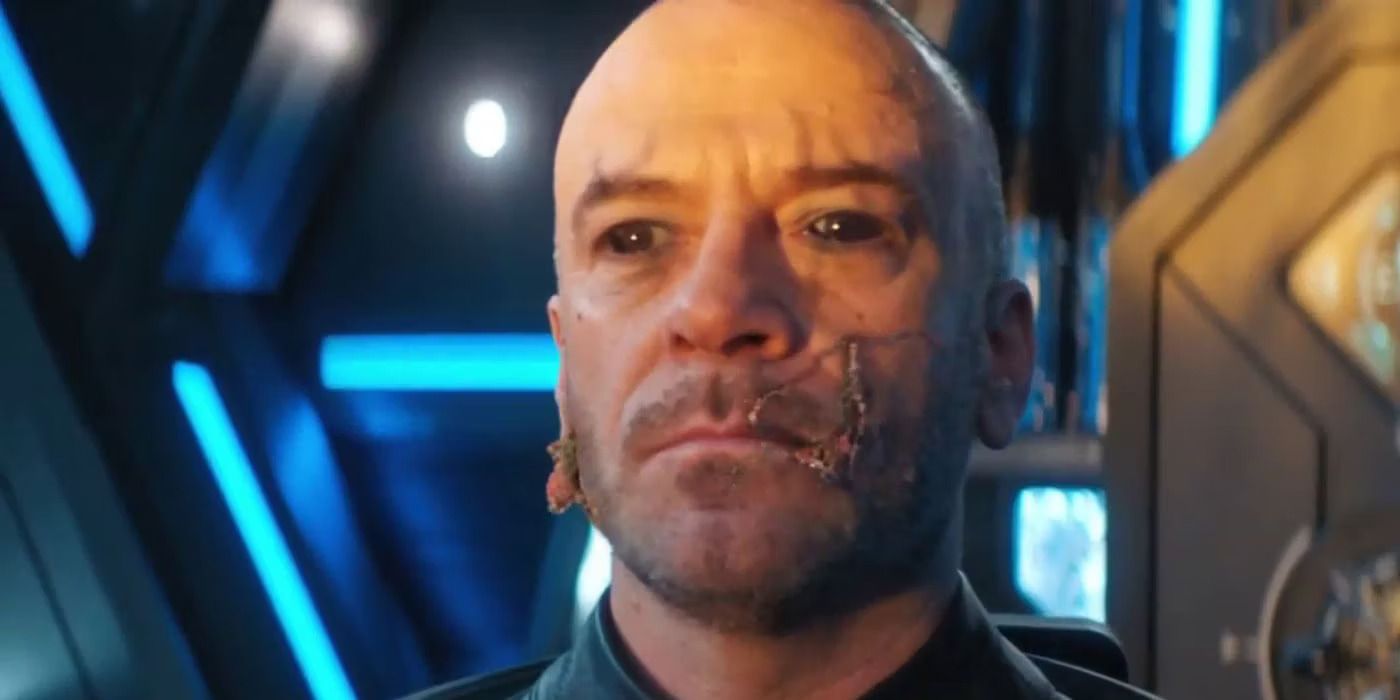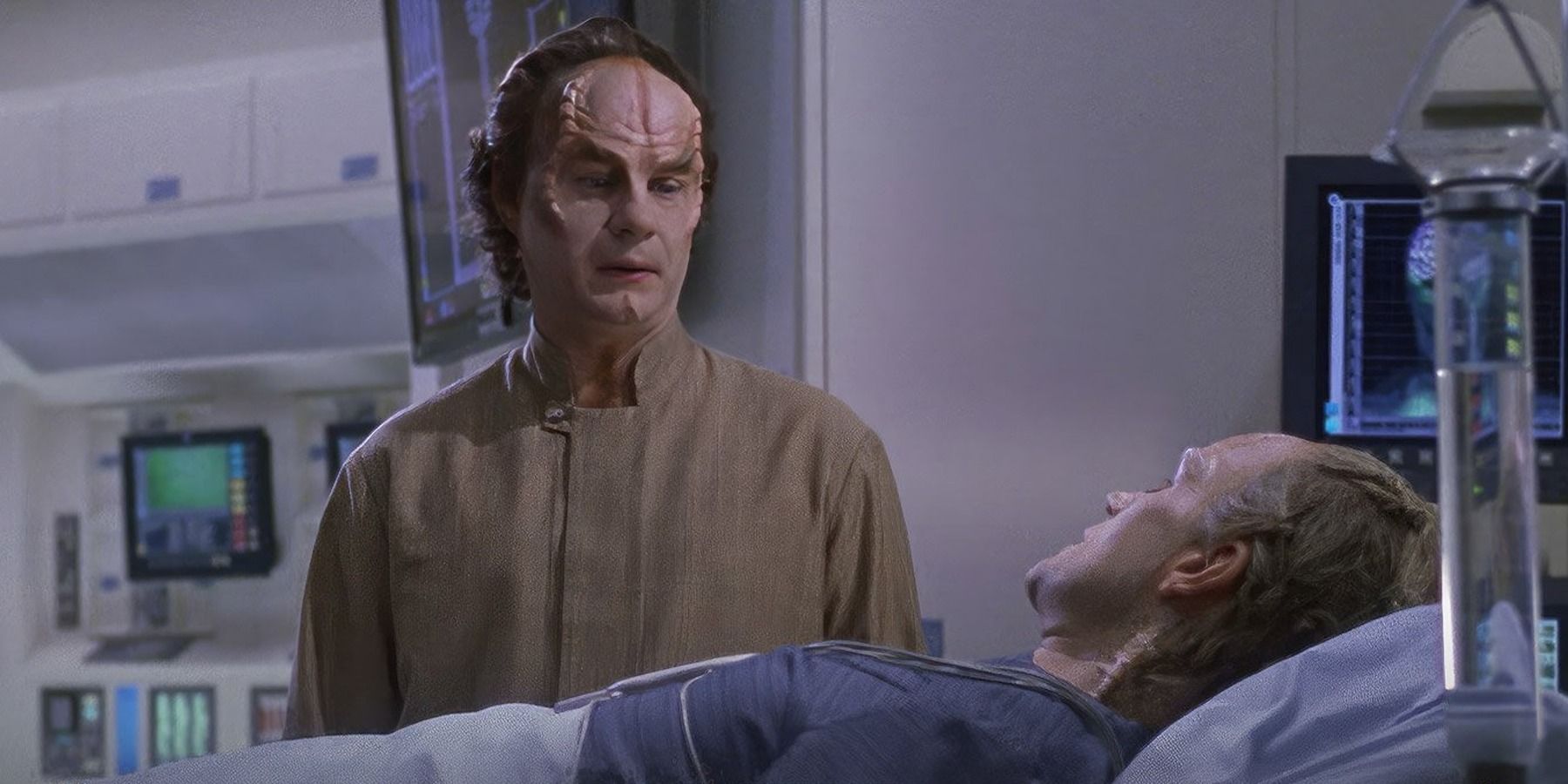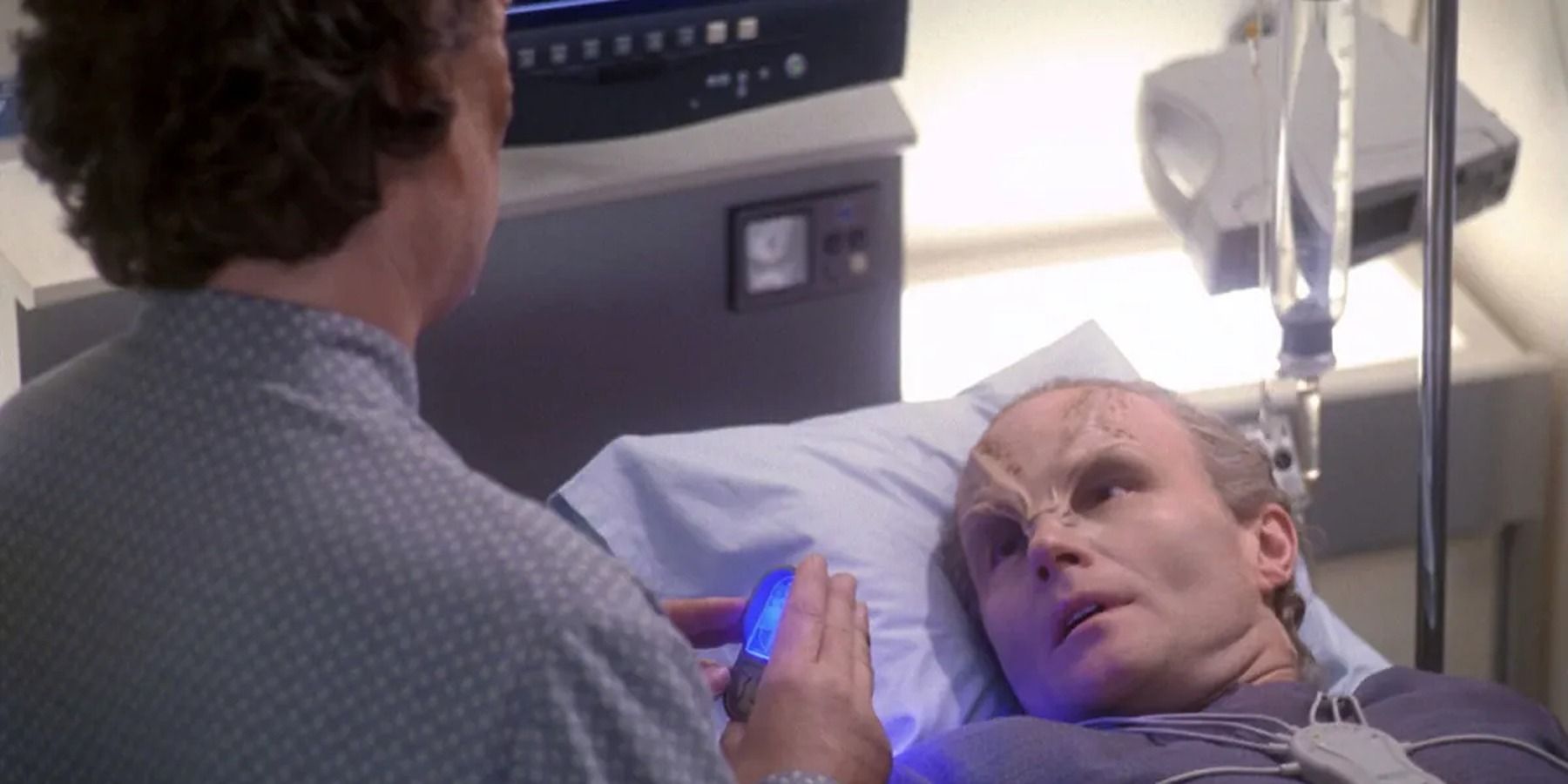Quick Links
Exploring the wide range of humanoid species in the vast Star Trek galaxy is a captivating journey for fans. Among these fascinating entities, the Antarans stand out with their distinctive V-shaped ridge adorning their foreheads. This unique feature has become synonymous with their identity.
While the exact origins of the Antarans remain shrouded in mystery, one theory suggests a connection to the Antares system. This speculation adds a layer of intrigue to their mysterious existence. Interestingly, the Beta Antares Ship Yards, under the operation of the Federation, hint at a potential affiliation between the Antarans and the United Federation of Planets.
The iconic V-shaped ridge on the forehead not only sets the Antarans apart visually, but also becomes a catalyst for contemplation of the evolution of humanoid races across the galaxy. It's a tangible symbol that sparks interest in their biology and culture, igniting the imaginations of Star Trek enthusiasts. It's no wonder many are curious about the lore of these mysterious beings.
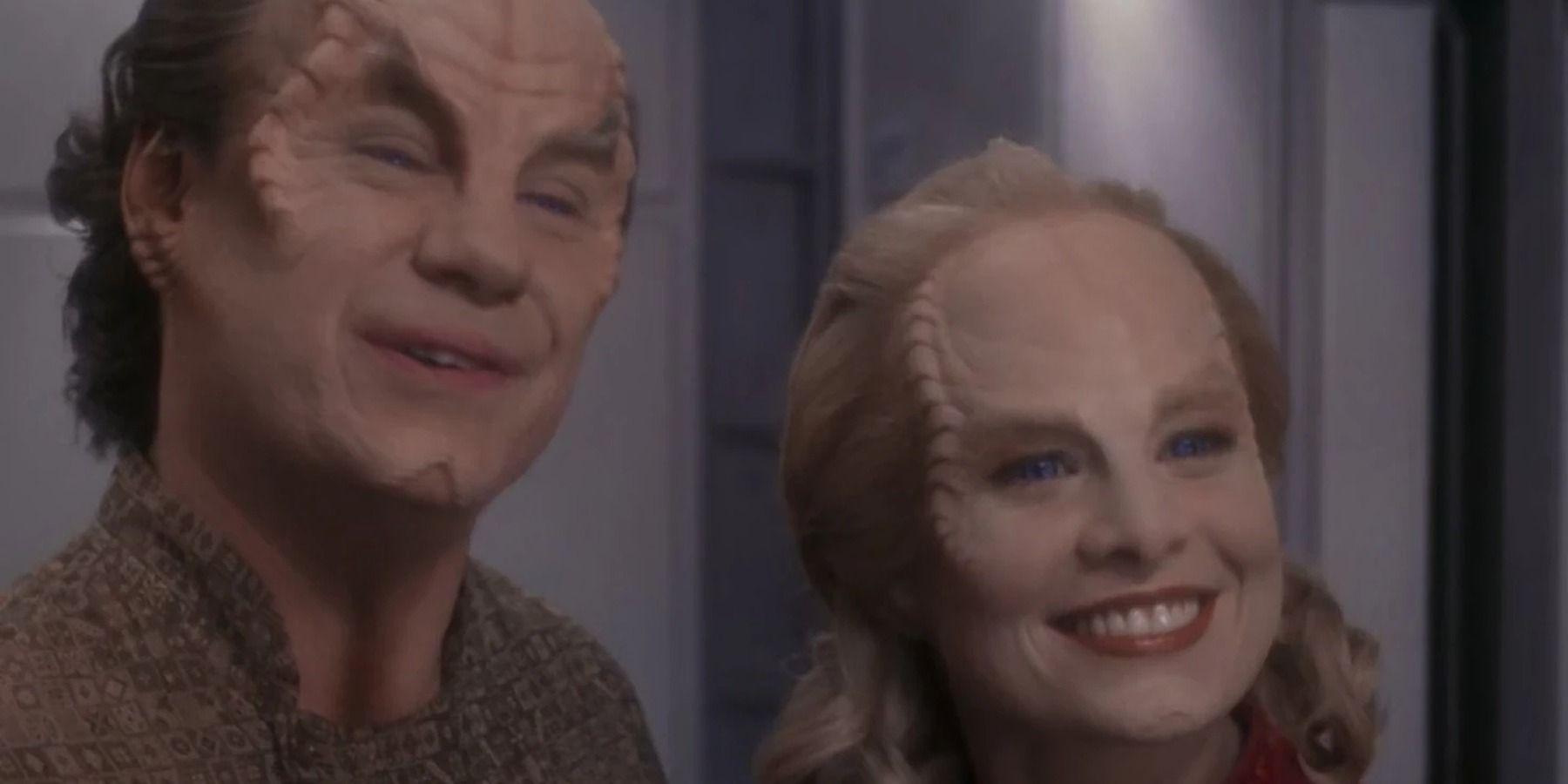
Star Trek: The Denobulan Race, Explained
With intellect as sharp as blades and a smile that hides a cosmic enigma, Star Trek's Denobulans defy easy understanding.
Quick Facts
- Antarans are humanoid species recognized by the distinctive V-shaped ridge on their foreheads.
- Antarans and Denobulans engaged in a brutal conflict marked by territorial greed and ideological strife during the mid-19th century. Denobulan military campaigns resulted in the deaths of millions of Antarans.
- The war deepened animosity, fueling disputes that persisted into the mid-22nd century. Accusations of war crimes against Denobulan doctors contribute to a history of prejudice and distrust.
- A turning point in Antaran-Denobulan relations occurred when Doctor Phlox, a Denobulan, treated an injured Antaran named Hudak on Xantoras. Hudak's initial resentment gradually transformed as Phlox challenged his beliefs.
- The Antaran-Denobulan conflict in Star Trek serves as a reflection of real-world prejudices, and the difficult task of fostering understanding between diverse communities.
Antaran-Denobulan Wars
The Antaran-Denobulan Wars remain a somber chapter in the shared history of these once-proud civilizations. Characterized by the stoic resilience of the Antaran people and the martial tendencies of the Denobulans, this dark conflict unfolded against a backdrop of territorial and ideological disputes.
The clash began in the mid-19th century, as Denobulan forces launched military campaigns against the Antaran people. In their pursuit of gaining territory, the Denobulans cast their adversaries as a faceless enemy. Their merciless battle tactics left an enduring impact on both civilizations.
The toll of the war was devastating, and the loss of twenty million Antaran lives cast a long and haunting shadow over interstellar relations. Accusations of war crimes worsened the animosity, as Denobulan doctors were accused of exploiting their knowledge of Antaran anatomy. These allegations left lasting scars on the collective memory, breeding animosity that persisted well into the mid-22nd century.
Mutual reconciliation appeared elusive, as the cycle of fear and hatred continued to perpetuate itself. The wounds of the Antaran-Denobulan War ran deep, creating a barrier between the two civilizations. The echoes of this brutal conflict served as a stark reminder of the destructive potential of interstellar wars, urging both sides to reflect on the consequences of their actions.
The Antaran Legacy
The lingering shadows of the Antaran-Denobulan War cast a pall over interactions between individuals from the two species. A poignant incident in 2153 at Xantoras brought to light the deep-seated distrust ingrained in Antaran culture. This event was observed through the eyes of Doctor Phlox from Enterprise NX-01, a Denobulan, and an injured Antaran named Hudak, a teacher of xenomythology.
In this crucial moment, Hudak realized that he was "the first Antaran to even see a Denobulan in six generations." He exposed the profound isolation that fueled the cycle of injustice, pushing reconciliation further into the realm of distant dreams. Doctor Phlox, who was raised with the belief that Antarans were "evil," took a different approach in raising his children, encouraging an embrace of diverse cultures. The incident forced Phlox to confront his internal struggle, with treating Hudak and highlighted the complexity of overcoming deep-seating biases.
As Doctor Phlox worked to heal Hudak's physical wounds, a parallel journey unfolded — one of introspection and evolving perspectives. Phlox acknowledged the historical grievances, but emphasized the paramount importance of moving forward. Despite his efforts, the road to harmony proved to be a challenging one. Long-held fears on both sides acted as significant barriers to progress.
The incident at Xantoras represents the broader struggle for understanding and unity between Antaran and Denobulan individuals. Doctor Phlox's commitment to change and Hudak's willingness to engage in dialogue hinted at the potential for transformation. Yet, the journey toward breaking the chains of distrust remained an uphill battle for both civilizations.
Despite the scars of the past, Antarans like Hudak and individuals such as Doctor Phlox exemplify the potential for growth, understanding, and collaboration. The story of the Antarans serves as a beacon of hope, inspiring audiences to break free from the chains of prejudice and embrace the rich diversity that defines the Star Trek universe.
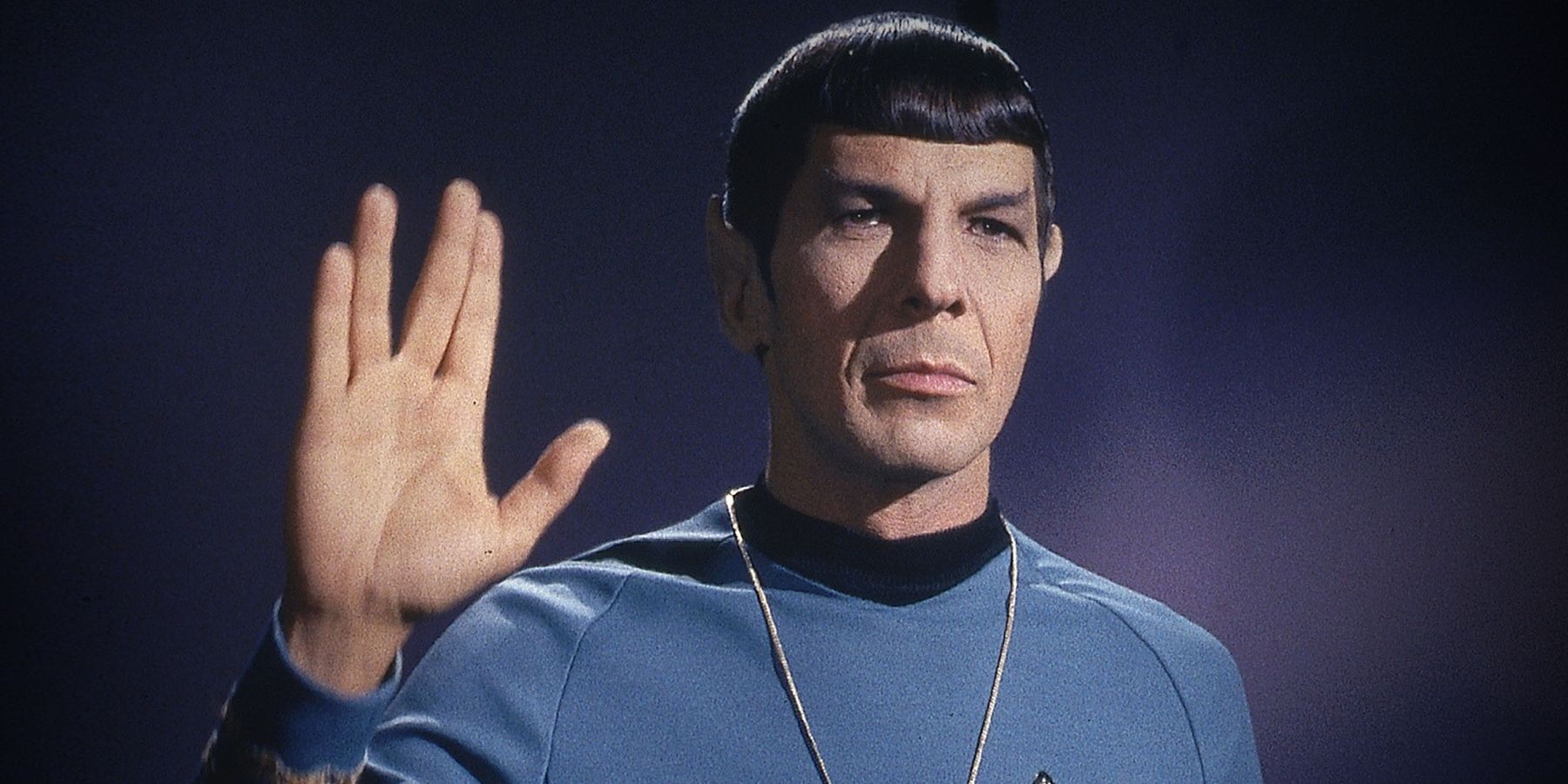
Star Trek: What Is Spock's Biggest Flaw?
Even Star Trek’s most rational minds like Spock must grapple with the inherent chaos imperfection.

